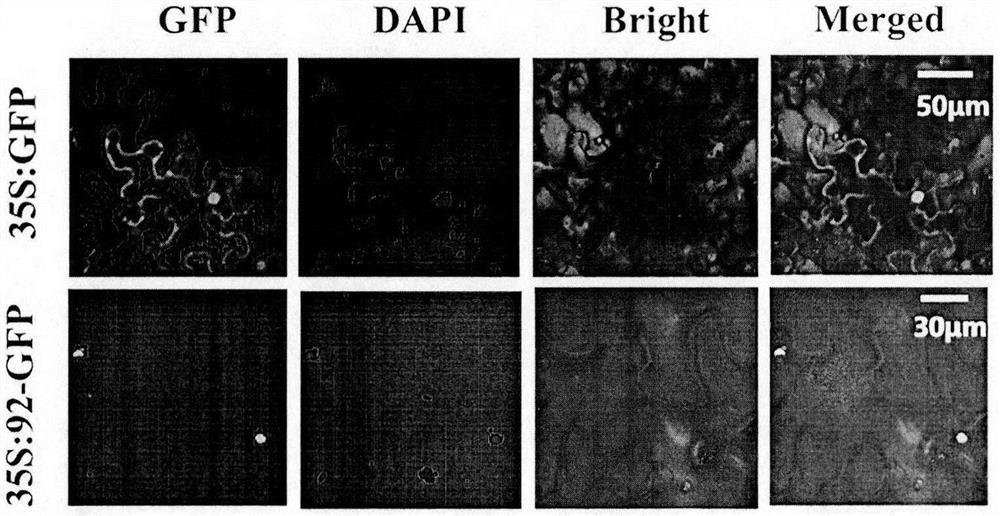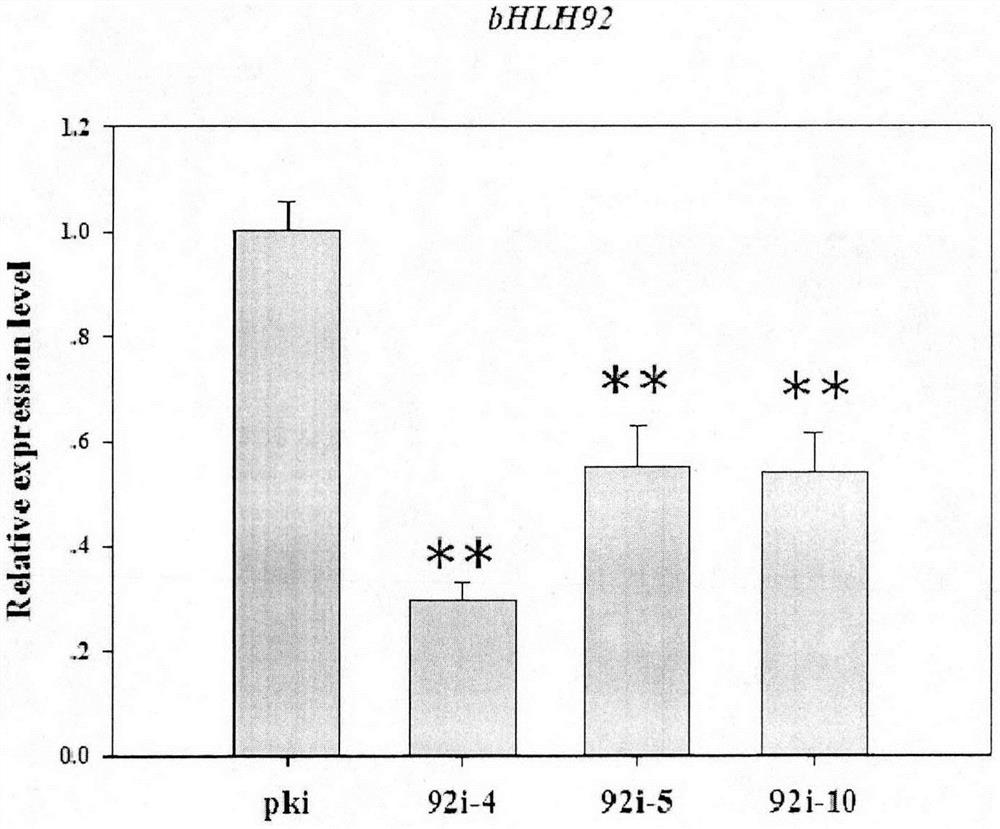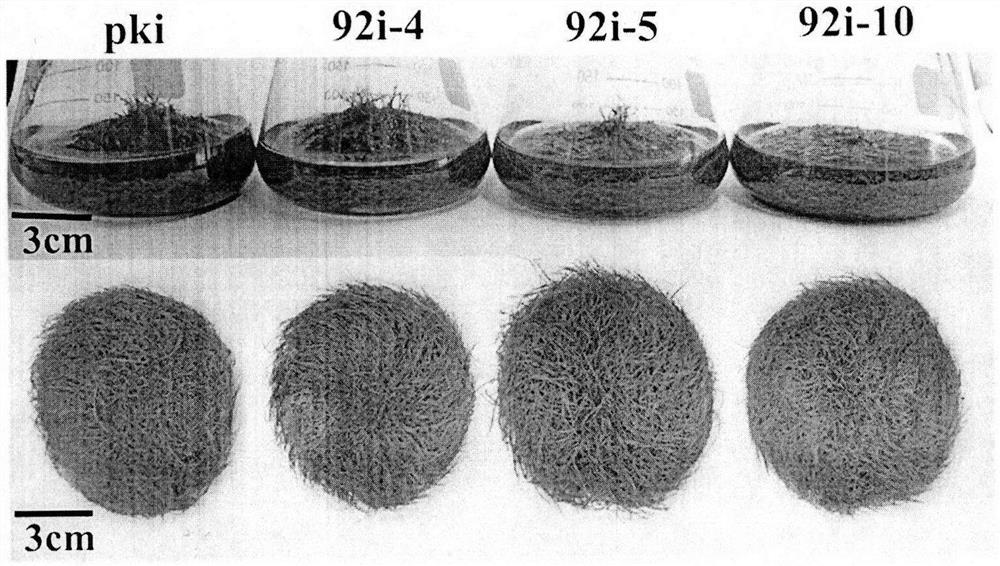SmbHLH92 gene cloning primer, expression vector, function of regulating salvianolic acid biosynthesis and application
A technology for biosynthesis and salvianolic acid, which is applied in the fields of plant molecular biology and genetic engineering, and can solve the problems of few reports on the biosynthesis of salvianolic acid compounds.
- Summary
- Abstract
- Description
- Claims
- Application Information
AI Technical Summary
Problems solved by technology
Method used
Image
Examples
Embodiment 1
[0023] Example 1 Cloning of Salvia miltiorrhiza SmbHLH92 gene
[0024] According to the open reading frame of the SmbHLH92 sequence, the primers for full-length amplification of the gene were designed, and the cDNA of Salvia miltiorrhiza was used as a template, and the nucleotide sequence of the SmbHLH92 gene, such as SEQ ID No.1, was amplified by PCR. The full length of the gene was 666 bp. The amino acid sequence of SmbHLH92 was deduced after translation of the nucleotide sequence, including 221 amino acid residues, such as SEQ ID No.2.
Embodiment 2
[0025] Example 2 Subcellular localization experiment of Salvia miltiorrhiza SmbHLH92
[0026] 1) Construct the recombinant plasmid pCAMBIA1302-GFP-SmbHLH92. Design full-length amplification primers with enzyme cleavage sites (R primers remove the stop codon), F: 5′-CATG CCATGG ATGCTTCCTATTTCGAGCGATG-3′R: 5′- ACTAGT GCTGTCGTCAGCTGCCG-3'.
[0027] 2) The recombinant plasmid pCAMBIA1302-GFP-SmbHLH92 was transformed into Agrobacterium tumefaciens GV3101. The recombinant plasmid pCAMBIA1302-GFP-SmbHLH92 and the empty vector pCAMBIA1302-GFP are transformed into competent cells of Agrobacterium tumefaciens GV3101, and the steps are as follows: Take 10 μL of the constructed recombinant plasmid pCAMBIA1302-GFP-SmbHLH92 and the empty vector pCAMBIA1302-GFP plasmid , added to 100 μL GV3101 Agrobacterium competent cells, gently blown and mixed, ice bathed for 30 minutes; quick-frozen in liquid nitrogen for 3 minutes, 37 ° C water bath for 3 minutes, then transferred to ice for 3 minu...
Embodiment 3
[0030] Example 3 Obtaining and Expanding Culture of Danshen SmbHLH92-RNAi Transgenic Hairy Root Positive Strains
[0031] 1) RNAi primer design and PCR amplification. Select a specific fragment of 123bp in the SmbHLH92 gene as the RNAi target region (located at 529-651bp of the gene), design primers at both ends of the target region, and add attB sequence at the 5' end of the primer according to the Gateway operation principle, where the F primer Add attB1 sequence: GGGGACAAGTTTGTACAAAAAAGCAGGCT, R primers add attB2 sequence: GGGGACCACTTTGTACAAGAAAGCTGGGT. The primer sequences of SmbHLH92 RNAi are as follows:
[0032] SmbHLH92RNAiF:
[0033] 5′- GGGGACAAGTTTGTACAAAAAAGCAGGCT ACCACCACAGCACCCTCAAC-3′
[0034] SmbHLH92RNAiR:
[0035] 5′- GGGGACCACTTTGTACAAGAAAGCTGGGT CTAGCTGTCGTCAGCTGCCG-3′
[0036] 2) Construction of SmbHLH92-RNAi vector. BP reaction: Add 25ng attB-PCR recovery product, 75ng pDONR221 entry vector, 1μL BP clonase II enzyme, supplement ddH to the PCR react...
PUM
 Login to View More
Login to View More Abstract
Description
Claims
Application Information
 Login to View More
Login to View More - R&D
- Intellectual Property
- Life Sciences
- Materials
- Tech Scout
- Unparalleled Data Quality
- Higher Quality Content
- 60% Fewer Hallucinations
Browse by: Latest US Patents, China's latest patents, Technical Efficacy Thesaurus, Application Domain, Technology Topic, Popular Technical Reports.
© 2025 PatSnap. All rights reserved.Legal|Privacy policy|Modern Slavery Act Transparency Statement|Sitemap|About US| Contact US: help@patsnap.com



